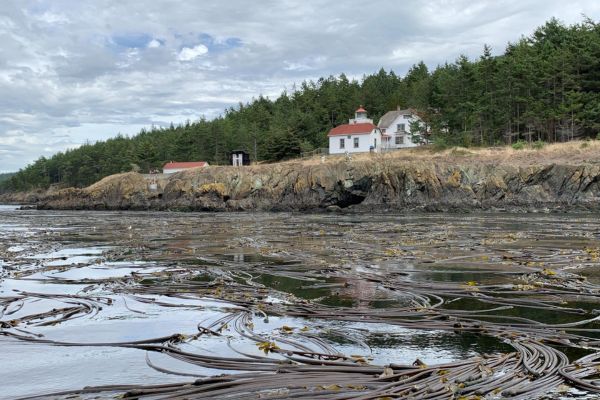
(photo courtesy of Samish Indian Nation)
One of the greatest repercussions of climate change is the significant impact on the availability and quality of crops that are traditionally grown, as well as those that are cultivated for subsistence. In several regions, global warming has been associated with an increased level of disease and mercury in shellfish due to the rise of sea surface temperatures. This poses a threat to our families above and beneath the waves.
Beyond sheer physical damage, climate change also impacts our culture. It leads to direct material losses, displacement of tribes, as well as loss of territory, cultural heritage, mobility, local knowledge, and language elements. With the rise of sea levels and storm erosion, coastal tribes also experience concern for cultural resources. This affects Indigenous people more than any other group, and we are doing something about it.
As a direct result of this significant impact, Tribes like Samish now take on a pivotal role in climate change mitigation and adaptation, demonstrating a proactive approach towards safeguarding their communities and natural heritage. The Samish Indian Nation's Department of Natural Resources (DNR) began to combat climate change in 2016 with the creation of our Climate Adaptation Program, created to better understand Samish citizens' concerns about climate change impacts and develop mitigation strategies to address them.
This work has included conducting several studies, one of which is a regional GIS-based (geographic information system) survey of habitats that support Samish First Food, First Medicine and Cultural Use plants. The survey focuses on working with landowners to be aware of these species and advocate for proper land management to create climate refugia, thus allowing these species of cultural significance to persist for future generations. Our DNR is also active in kelp forest monitoring and restoration efforts in Samish Traditional Territory throughout the San Juan Archipelago. Samish DNR employs a dive team to monitor temperature and ocean acidification in these critical keystone habitats and are working to restore areas where kelp has disappeared.
Furthermore, Samish DNR is very active within Skagit County, partnering with a variety of entities to replant riparian zones for stream cooling, salmon habitat and carbon sequestration. Samish also has lands enrolled in the Skagit Valley Conservation Reserve Enhancement Program (CREP) and is dedicated to riparian planting and healthy streams on their own property.
A comprehensive survey of all the beaches in Samish Traditional Territory is underway to better understand the risks posed by sea level rise and storm erosion to cultural resources of concern. This information will be used to identify potential restoration areas with soft shore and living shoreline techniques, identify areas where Tribal Archaeology staff need to monitor or take action, and develop a comprehensive plan to protect those cultural resources at risk.
We are not the only Tribe in the country doing this work. Tribes across the United States are contributing impactfully to keep culture alive while preserving land for future generations. Through collective action and shared knowledge, we are fostering a legacy of environmental stewardship, ensuring that our land continues to thrive.
Given the tribe's unique history, we have come to realize that we cannot do this alone, and we all must work together in sharing the responsibility and, at the same time, doing our own part to make a difference for all our generations to come.
Tom Wooten is chairman of the Samish Indian Nation, located in Anacortes, Washington.
No comments:
Post a Comment